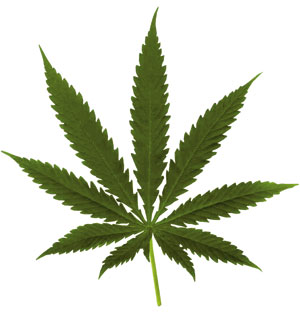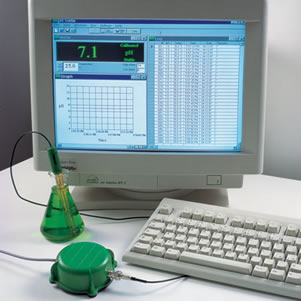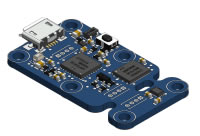sensor :: audio
While it may not be necessary or beneficial to monitor and respond to changes in the actual decibel output of the overall grow room or one of it's subsystems, strategically collected and monitored microphone recordings can actually be used as an inexpensive alternative to air flow meters.
Placing mic sensors within close proximity to the grow-light-cooling inline fan(s) will allow you to monitor (at least to some degree) the operation of that airflow subsystem. From a binary perspective and at the very least, you will know whether these systems are running or not, and you can create triggered actions (such as the immediate deactivation of
lamps) if the grow light cooling subsystem(s) is not performing as intended. Even if your lighting systems are programmed to trip off in the event of an over-heating, this preemptively firing dependency will help you to maximize the life of your bulbs as well as ward off unnecessary spikes in the grow rooms temperature.
sensor :: video
A properly constructed indoor grow room is...more-or-less...a self-contained environment. As lovely as the grow show is to look at on lonely winter nights, anytime you don't have to break the seal of your closed environment to check to see that things are in going well (or just to sneak a lustful peek) is literally money in the "smoke bank." This is because the leaking of light during a photo-period night or unnecessarily venting CO2, warmth, and even humidity can affect the productivity of your grow on a level that would be measurable over time...or at least from crop to crop.
With this in mind, one to many video feeds of all the key visual angles can bump up the productivity of the grow, provide valuable insight into the performance of your grow room subsystems, and in general provide you with a custom tailored, 24/7, all access grow show that you could access from potentially anywhere on your mobile phone.
With respect to getting all the right angles...(1) recording a video log of the sunrise and sunset photo-period event horizons (pun intended), (2) the triggering of an atmospheric evacuation (planned and unplanned) and (3) the activation and operation of the nutrient delivery subsystem at its outer edges can provide valuable and near real-time insight into the quality and consistency of these important but oftenly automated-out-of-sight operations.
For example, establishing a video feed against the nutrient delivery systems feeder tubing at the base of an outlier plant may expose sub par performance/pressurization of the nutrient solution water pump(s). A single blown bulb in a corner grow light may not be noticed by the photo-diode of the CO2 regulator, but a LIVE video feed (or snapshot recording) of a sunrise will both expose faulty lighting and may even provide you with the warning indicators of an immanent failure. Such pending failure may be indicated by super-extended bulb warm up periods before achieving 100% brightness; of course...you would normally never know that one of your lamps was taking an extra 15min to warm up unless you were physically present during one of the automated photo-period sunrises.
sensor :: pH
Due to the dynamic and complex nature of the environment within which this metric will be recorded, telemetric results need to be monitored closely, and independent analysis conducted on an ongoing basis. Any deltas need to be documented, as well as the procedures taken to ensure proper sensor performance. Be aware of the constant nature of the telemetric logging processes...e.g. removing a sensor for 10 min to clean it will affect your log data!
Also, as I have no plans to design and incorporate subsystems to automate the regulation of the pH metric within the grow (mainly due to costs and the experimental / hobby nature of this project), it would be beneficial to architect...into the telemetric processes of this subsystem...an automated escalation plan for the upper and lower bounds of this metric. Adjustments to pH levels can be done manually; for my purposes...I'm planning on it.
If you don't automate the pH level management for your grow room, the escalation path should be above and beyond any other standard or regular notifications.
You need to notice at a glance, and so don't want the pH anomalies to get lost amid a sea of real-time biometric vitals.
When taking corrective action in response to such pH level alerts, a process for logging the action taken...e.g. timestamp as well as the volume and type of corrective chemical added should be taken into consideration. Eventually, and from an empirical perspective, you should be able to understand exactly what actions should be taken and when. After sufficient trial and error, all guess work can go out the window.
Science Lab Chemicals and Lab equipment stocks a kit that allows you to record pH measurements right on your windows computer for just over $100. It's called the pH Turtle.
sensor :: lux
According to the architecture of my grow room and due to the planned lux dependencies of the atmospheric subsystems (i.e. CO2, TEMP, and HUMIDITY controllers are directly regulated by the existence of light or lack thereof) one telemetric lux sensor needs to be placed within close proximity to the photocells that are used to control these light-dependent subsystems.
That being said, the monitoring of these subsystems can be simplified by grouping the controllers for these light sensitive systems into close physical proximity. This also helps to ensure that all light dependent subsystems behave similarly to the light levels that are present.
The remainder of available light sensors can be used to log the more biometrically indicative vitals of the grow rooms luminosity; these sensors can be incorporated into the grow to record light levels from the perspective of the plants.
The Yocto-Light-V3 device is an USB ambiant light sensor (lux meter) which will allow you to you measure ambient light up to 100'000 lux. Measurements can be directly read via USB or stored on the device internal flash for later retrieval when connected again by USB. Click here to
learn more.
sensor :: temp
At the time of this writing, the temp and humidity sensors have been scoped to be one and the same. Depending on the size of the grow, one to many sensors may be placed throughout the environment.
Sensor output should be monitored individually and it would be wise to create a report aggregator with the ability to average each of these metrics into a single result...respective of humidity and temp in real-time.
Omega.com stocks a real-time temperature and humidity monitor that is USB compatible for about $75. Some of the listed features include :
- displays real-time temperature and humidity readings on your PC using the Windows Control Software
- Plugs directly into USB
- User-programmable alarm thresholds for temperature and relative humidity
- dew point indication via windows control software
Click here to find out more about this Omega sensor.
Don't forget to consider any subsystems that may be regulated by temp and/or humidity; you should plan to build in oversight for any subsystems that are dependent on these metrics to function properly. I.e. watch what the watchers are watching in order to make sure that they are doing it right!






